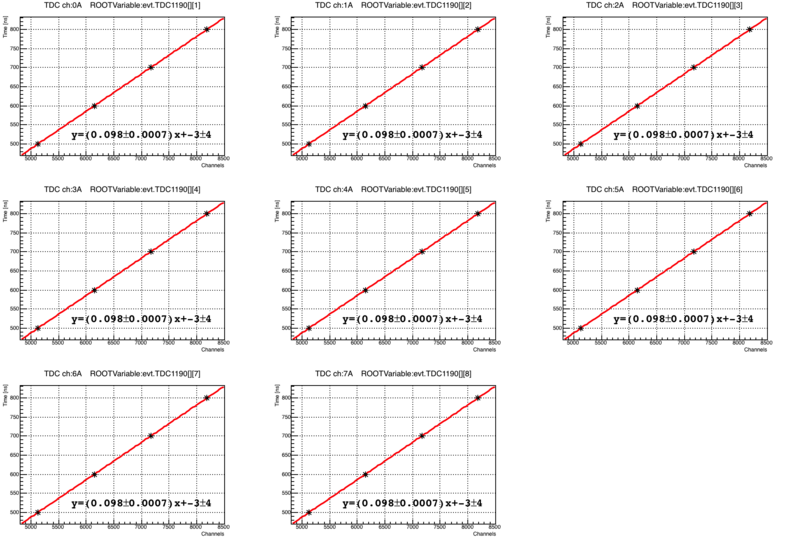Difference between revisions of "JB DAQ"
| Line 30: | Line 30: | ||
When an input receives 2 or more pulses over a duration less than or equal to (the delay) + | When an input receives 2 or more pulses over a duration less than or equal to (the delay) + | ||
(the output pulse width) + (~0-20 ns), '''only the final pulse''' received during this duration will appear in the delayed output signal. | (the output pulse width) + (~0-20 ns), '''only the final pulse''' received during this duration will appear in the delayed output signal. | ||
| + | '''solution:''' | ||
| + | Connect one of the two available the outputs (OUT) to the VETO. This causes the device to reject multiple pulses during the delay duration, ensuring that the delay is constant with respect to the initial pulse. | ||
Revision as of 19:05, 28 October 2016
Back JB Analysis
DAQ commands
Source CODA and ROOT
source ~/CODA/2.6.2/setup source /home/daq/src/root/root-5.34.00/bin/thisroot.csh
Run the bash script titled 'jeff', which takes the run number as an argument. This script will automatically convert the .dat file to a .root file and then open it in root. The script: File:Jeff.txt.
bash jeff 4716
The first index of evt.TDC1190 is the hit #. The second index increases consecutively with TDC channel number, but the index starts from 1, while the TDC channels start at 0.
Common ROOT plot commands for copy-past:
First hit minus second hit:
R1DC->Draw("(evt.TDC1190[2][1]-evt.TDC1190[1][1])")
PMT difference:
R1DC->Draw("(evt.TDC1190[1][2]-evt.TDC1190[1][3])/10","evt.TDC1190[1][2]!=0 && evt.TDC1190[1][3]!=0 && evt.TDC1190[1][1]!=0")
PMT Sum, where evt.TDC1190[1][1] is the trigger:
R1DC->Draw("(evt.TDC1190[1][3]/10+evt.TDC1190[1][2]/10)/2-evt.TDC1190[1][1]/10>>PMTSum(1000,-500,500)","evt.TDC1190[1][2]!=0 && evt.TDC1190[1][3]!=0 && evt.TDC1190[1][1]!=0")
TDC Calibration
The data was collected by taking the channel difference between two pulses with a delay of 500,600,700, and 800 ns.
Miscellaneous
Pace of signal
The pace of a signal in a 223/U cable is 1.5 ns/ft.
Backwards dead time of digital delay modules
When an input receives 2 or more pulses over a duration less than or equal to (the delay) + (the output pulse width) + (~0-20 ns), only the final pulse received during this duration will appear in the delayed output signal. solution: Connect one of the two available the outputs (OUT) to the VETO. This causes the device to reject multiple pulses during the delay duration, ensuring that the delay is constant with respect to the initial pulse.
